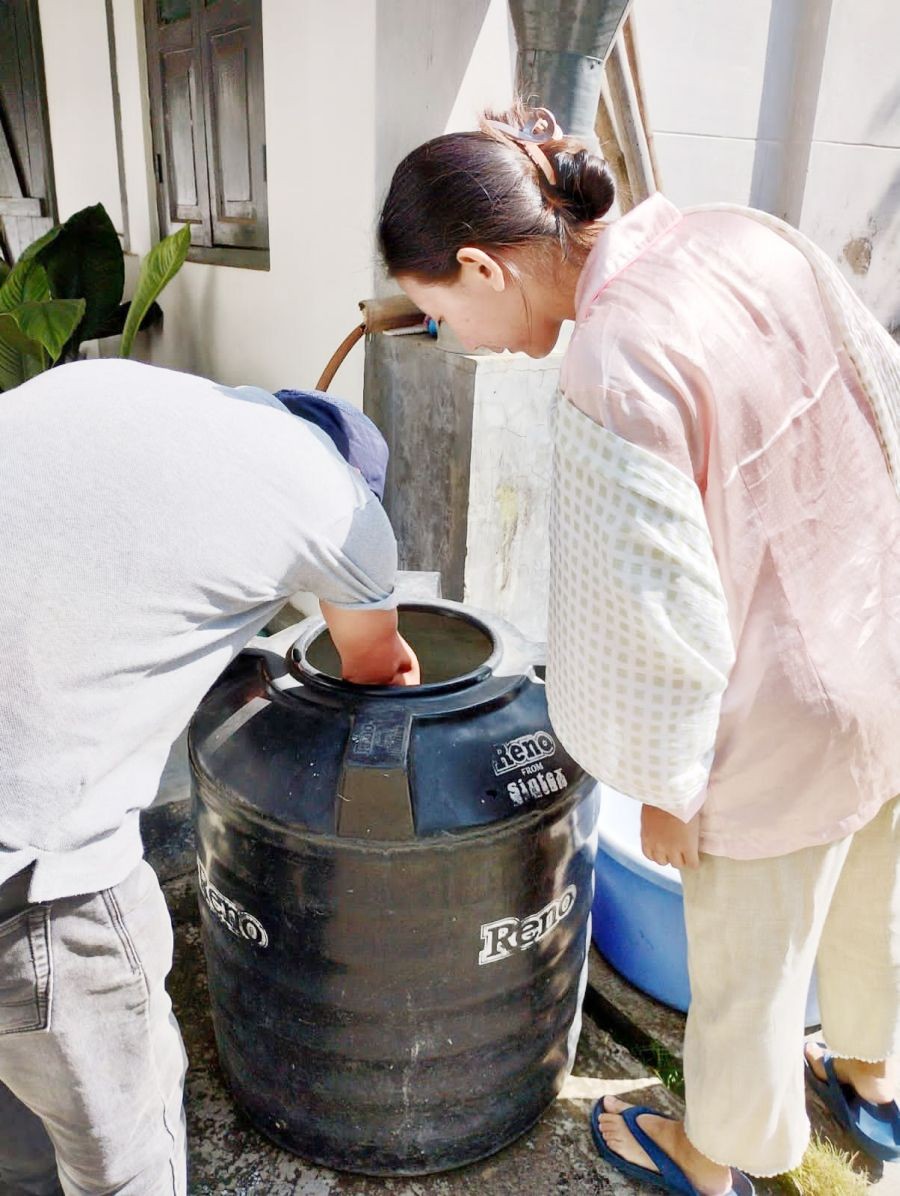The NVBDCP has been conducting house to house vector studies and other activities to create awareness on dengue control. (Photo Courtesy: NVBDCP)

Atono Tsükrü Kense
Kohima | November 18
In recent times, high incidences of dengue have been reported from the state, particularly in Dimapur district with 104 cases and Kohima with 4 cases till October.
According to the World Health Organisation (WHO), dengue fever is one of the top ten global health threats and also the most rapidly spreading. Each year, an estimated 390 million dengue infections occur around the world, resulting in up to 36,000 deaths.
Causes and symptoms
Speaking to The Morung Express, Health & Family Welfare, joint director and State Programme Officer (SPO), National Vector Borne Disease Control Programme (NVBDCP) Dr Neisakho Kere said dengue fever is caused by a virus transmitted primarily by aedes aegypti mosquitoes which is also known as ‘tiger mosquito’ for its striped patterns.
He described dengue carrier mosquitoes as ‘small but very effective’ that are easily spread and difficult to control.
Dengue carrying mosquitoes, he explained, usually bite in the early morning and around sunset. Dr Kere explained the four serotypes namely DENV-1, DENV-2, DENV-3 and DENV-4 wherein type-2 is considered more severe than the others.
Some of the symptoms he mentioned includes break-bone fever, bodyache, retro-orbital eye pain, diarrhoea, vomiting and in extreme cases ‘dengue hemorrhagic fever’ which can cause serious bleeding.
He further informed that a person with prior infection with one dengue serotype is a risk factor for developing later infections.
Where do aedes aegypti mosquitoes live?
Dr Kere said aedes aegypti mosquitoes live along with humans where blood is readily available.
“It lives and breeds in a small container (even a bottle cap) with water, leaves, drainage, fisheries etc and the eggs can hatch within 7-10 days,” he informed.
Not much cooperation from public
House and container index of aedes aegypti mosquito larvae is very high in Dimapur, according to Dr Kere, reaching as high as 31 during the house to house surveys.
Index of above 10 is considered as an outbreak, he underscored.
He said the department has been carrying out entomological studies, larvicidal operations, larvivorous fish distributions for fisheries, open drains and water bodies, fogging, house to house vector study etc.
However, he maintained that this is not enough to control the outbreak as it requires each and every household to maintain basic sanitation etiquette.
While the conventional strategy for dengue control heavily on reducing the number of water holding containers that support mosquito breeding, Dr Kere said, “we are not getting much cooperation from the public.”
“During the survey in positive houses, we have been creating awareness and requesting the public to clean their surroundings, particularly to empty/remove water accumulation” said Dr Kere adding “it’s impossible for us to go house to remove unnecessary water collections.”
Appealing the public, Dr Kere said it is the duty and responsibility of every citizen to clean and remove unnecessary water collections in and around their houses, keeping in mind the health of themselves and others.
“It is only through the conscious actions of the people, dengue can be prevented and controlled,” said Dr Kere.






